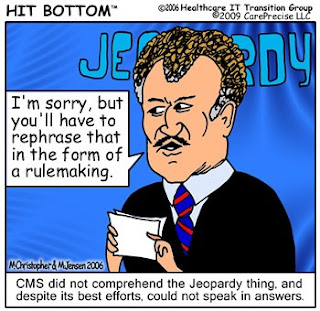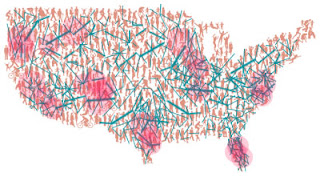In 2019, CarePrecise implemented the data mining program that led to the development of ScriptFax, an enhanced pharmacy fax dataset. Soon after launching ScriptFax, which helps transmit prescriptions to pharmacies, our customers asked for something like the opposite: A dataset that facilitates fax communication with the prescribers – physicians, physician assistants, advanced practice nurses, nurse practitioners, dentists, and others who write prescriptions, edit and transfer patient records, and the like.
After tooling up to mine hard-to-find fax numbers for these clinicians, and a few weeks of testing, CarePrecise released ScribeFax: Enhanced Clinician Fax Database. It works differently from ScriptFax in that ScriptFax is a "flat file" of around 100,000 pharmacies, while ScribeFax is a relational dataset encompassing more than 5 million prescribing clinician and workplace records, plus all of the remaining 2 million+ records from the National Provider Identifier database (essentially all of the CarePrecise Complete active provider data, in addition to the mined fax numbers).
The relational structure of ScribeFax makes it an easy addition to other datasets from CarePrecise and others. The clinician's NPI number provides the relational key across essentially all of each person's records within the massive CarePrecise Reference Database (CPRD). From each month's top-down update of the CPRD, all of the company's products are "packaged." While it would be easy enough to sell ScribeFax as a modular add-on, instead CarePrecise includes the core data on all of the providers as relational tables within ScribeFax.
Several Fax Numbers for One Prescriber: Which to Use?
ScribeFax data is delivered in CSV format for ingestion into the client's data environment. From there, clients' own internal systems dictate specific usage. But it's important to understand the meaning of several key data points.
As our crowdsource partners use the data, they first choose the highest priority NPI/Fax pair based on the FaxSource/FaxType indicators. If that fax transmission fails, their system tries the next until the TX succeeds.
FaxSource: Where the fax number came from
ScribeFax, like ScriptFax, mines multiple fax numbers per location, and then assigns a priority to each based on its source. (This prioritization is independent of the Grade assigned, which is based on transmission success.)
For instance, if a fax number is found on the clinician's own self-reported record, FaxSource is assigned the value of 100. Lower values identify higher priority, like "1st place," "2nd place," etc., so a FaxSource of 300, indicating that the source was the clinician's clinic record, may be considered a less direct priority than a 100 or 200. There are eleven FaxSource indicators in all, two of which are reserved for future use. FaxSource indicators between 000 and 099 are used to indicate external sources, such as crowdsource partner's data or a that of a third party. 200 indicates a clinician's personal Type 2 NPI record (for their owned corporation or other business entity); 300 indicates a group practice record; 400 a clinic record; 500 indicates that the fax was sourced from a co-located clinician's record; 600 flags an unproven Fax/NPI pair submitted by a third party but as yet untested; 700 is unassigned; 800 indicates a fax number associated with the clinician's co-located hospital record; and 900 is unassigned.
FaxType: What kind of address it's associated with
In ScribeFax, as in ScriptFax, there are two general types of healthcare provider address: the practice address(es) and the mailing address(es), with a few other distinctions. In order of priority: P in the FaxType field indicates a fax number that was discovered for a reported as the clinician's main medical practice physical location; S indicates a fax reported for a secondary practice location keyed to a clinician's record; E is an endpoint reported on a clinician-associated record; and M indicates a fax number found for a clinician-associated mailing address.
Fax Number Priorities
In this scheme, a user would first choose a fax number with FaxSource 100 and FaxType P, which would choose a self-reported pracice fax number. If that fails, the next lower priority would be tried, 100S; then 100E, followed by 100M, then 200P, and so on. When a fax number succeeds or fails, it is graded according to an A through F scale, with A being "reached the right clinician with a fax," and F being "wow this thing may not even be on the planet." Data mining is powerful, but it needs a human (or automated) assist.
Note that CarePrecise routinely checks for working fax numbers and assigns "F" to those proven to be stinkers (and "C" to the ones that do receive a fax but aren't proven to reach the particular clinician, etc.). We continue to report these, as an aid for customers who want to clean up their own internal data, and to avoid an endless cycle of retesting.
Links to Provider Data
ScribeFax links directly to both the clinician's provider data, and also to the fax's source provider data, both individuals and organizations. These data are included in the ScribeFax package: Practice and mailing addresses, phone numbers, specialties and facility types, licenses, MSA/CBSA and other location data. Linkage via CCN number is possible using an add-on module that includes a crosswalk between CCN numbers and hospitals' NPI records. Additional components are also available, including a practice group and hospital affiliation package, clinician procedure volumes module, and health system linkage via hospital affiliations.
Integration
ScribeFax is delivered in quarterly or monthly update packages consisting of 21 data tables in CSV format ready for ingestion into the client's data environment. Basic licensing permits use throughout the organization, and it may be placed in a data lake that is protected from outside access.
Initial integration involves creation of ingestion routine automation, which facilitates quick assimilation of the monthly or quarterly updates, depending on which subscription plan is selected. That assimilation is the second step, which is greatly simplified by the fact that CarePrecise sends the complete dataset with each release, with all tables in sync to the release date, allowing simple drop/add of all ScribeFax tables.
Support
As with all CarePrecise data products, expert support is available from data analysts and engineers who work directly with ScribeFax and the related datasets. Depending on the subscription plan chose, free support ranges from 30 days to 90 days, with affordable extended support available.





